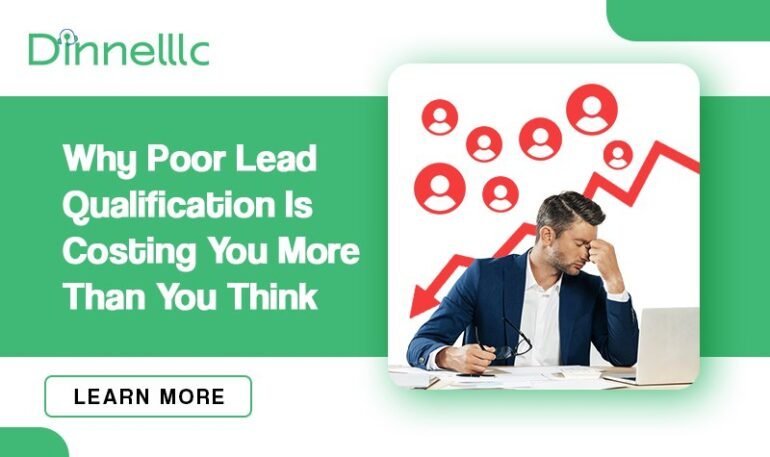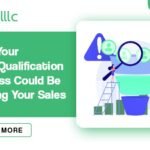Why Poor Lead Qualification Is Costing You More Than You Think

Lead generation is the lifeblood of any business. However, not all leads are created equal. While capturing a large volume of leads might feel like a win, failing to properly qualify those leads can have significant consequences for your sales process and bottom line. Poor lead qualification doesn’t just waste time; it drains resources, damages your brand reputation, and can hinder business growth in unexpected ways.
In this blog, we’ll explore why poor lead qualification is costing you more than you realize and how to turn things around.
What Is Lead Qualification?
Lead qualification is the process of determining whether a potential customer (or lead) is likely to convert into a paying customer. This involves evaluating factors such as:
- Budget: Does the lead have the financial capacity to purchase your product or service?
- Need: Does the lead genuinely need what you’re offering?
- Authority: Is the lead the decision-maker or someone who influences decisions?
- Timing: Is the lead ready to make a purchase now, or are they just gathering information?
When done effectively, lead qualification ensures that your sales team focuses on the most promising prospects, maximizing their time and effort.
The Hidden Costs of Poor Lead Qualification
- Wasted Time and Resources
Every unqualified lead consumes valuable resources—whether it’s a sales representative’s time, marketing emails, or follow-up calls. When your team spends time chasing unqualified leads, they miss opportunities to engage with prospects who are genuinely interested and ready to buy.
Example: Imagine your sales team spends 10 hours a week on cold leads. Over a year, that’s 520 hours of wasted effort that could have been redirected to high-value prospects.
- Longer Sales Cycles
Unqualified leads often result in unnecessarily long sales cycles. A prospect who is not ready to buy or lacks decision-making authority will stall the process, leading to delays, frustration, and inefficiency.
Impact: This not only slows down your revenue stream but also creates a backlog for your sales pipeline, making it harder to close deals quickly.
- Higher Customer Acquisition Costs (CAC)
When you allocate resources to pursue leads that don’t convert, your customer acquisition costs (CAC) rise. This directly impacts profitability, as you spend more to acquire fewer customers.
Reality Check: Businesses with poor lead qualification often spend significantly more on marketing and sales efforts without seeing proportional returns on investment.
- Reduced Team Morale
Nothing demotivates a sales team more than constant rejection or dealing with uninterested leads. Poor lead qualification can lead to burnout, frustration, and decreased morale, which may affect overall performance.
Result: A demoralized team is less productive, less motivated, and more likely to underperform.
- Damaged Brand Reputation
When your team bombards uninterested leads with calls, emails, or follow-ups, it can come across as pushy or intrusive. This not only frustrates prospects but can also damage your brand’s reputation in the market.
Consequence: A poor perception of your brand can deter future prospects from engaging with your business.
How to Improve Lead Qualification
- Define Your Ideal Customer Profile (ICP)
Start by identifying the characteristics of your ideal customer. This includes demographics, industry, budget range, and pain points. Having a clear ICP ensures your team knows who to target.
Tip: Collaborate with your sales and marketing teams to create detailed customer personas.
- Use the Right Qualification Framework
Adopt a lead qualification framework like BANT (Budget, Authority, Need, Timing) or CHAMP (Challenges, Authority, Money, Prioritization) to evaluate leads systematically.
Why It Works: These frameworks provide clear criteria for identifying high-value leads, helping your team prioritize effectively.
- Leverage Technology
CRM tools, marketing automation platforms, and AI-driven analytics can help you track, score, and qualify leads more efficiently.
Example: Use tools like HubSpot, Salesforce, or Marketo to automate lead scoring based on engagement levels and other data points.
- Align Sales and Marketing Teams
Misalignment between sales and marketing often leads to unqualified leads being passed down the pipeline. Ensure both teams have a shared understanding of what constitutes a qualified lead.
Action Step: Hold regular meetings to review lead quality and refine your qualification process.
- Continuously Optimize Your Process
Lead qualification isn’t a one-time task. Regularly analyze your results, gather feedback from your sales team, and adjust your criteria based on changing market conditions or customer behaviors.
Pro Tip: Monitor conversion rates from qualified leads to identify gaps in your process and improve over time.
Conclusion
Poor lead qualification doesn’t just cost you money it costs you time, efficiency, and the trust of your sales team and prospects. By investing in a robust lead qualification process, you can optimize your sales efforts, lower acquisition costs, and drive higher conversion rates.In the competitive business landscape, it’s not about how many leads you have; it’s about how many of those leads turn into loyal customers. Focus on quality over quantity, and watch your sales performance soar.






